
Aston Martin needs a win. No, not the Formula 1 team, though we're sure they would love to stand on the top step of a podium. The car company, rather, needs a sales win. Aston recently sold its 4.6 percent interest in its namesake F1 team for $146 million, a move that has all the signs of one intended to keep the lights on. Thankfully, its next car is an all-but-guaranteed billion-dollar win.
With Ferrari, McLaren, numerous EV makers, and even Chevrolet selling 1000-hp cars, what makes the 1064-hp Valhalla stand out? For one thing, style. Despite its concealing teal-and-black camouflage, the prototype Valhalla we're driving on Aston's own Stowe Circuit (the 1.1-mile mini-track within Silverstone), the car looks good. There's a wing at the back perched atop hydraulic pylons. Most of the body is curved, sculpted, and flowing. There's no rear window—but who needs it when you can accelerate to 60 mph in two seconds and change? The aesthetics may have come from left field, but underneath the body, a somewhat common formula reveals itself: an all-wheel-drive, mid-engine, plug-in-hybrid sports car with dihedral doors. Common in the world of supercars, at least.

Until now, nearly all Astons coming out of Gaydon were constructed predominantly of metal, with the exception of the ultra-limited Valkyrie. The Valhalla's carbon-fiber central tub and body come from Aston Martin Performance Technologies. Aluminum subframes carry control-arm front and multilink rear suspensions. Adaptive Bilstein dampers tamp coil springs at all four corners, but the front coil-overs have pushrod actuation. Carbon-ceramic brakes reside at all four corners. Traditional anti-roll bars squelch lean, and rubber bushings maintain some compliance for this road-focused car. The move to make the front suspension inboard solves a big packaging problem; Aston wanted a low dash for the best possible visibility, and as such, arranging the dampers and springs horizontally keeps the upright area near the wheel svelte. A large wraparound windshield makes the most of this application.
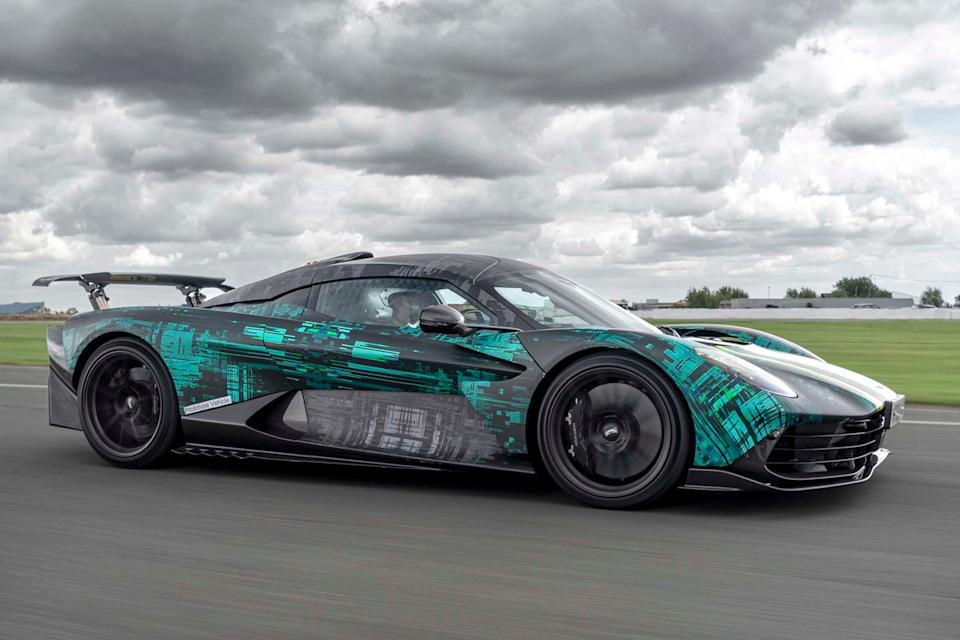
Behind the cockpit lies a monster, Mercedes-AMG's flat-plane-crank 4.0-liter V-8. Aston engineers got to tune it how they wanted and selected all the individual parts. The massive turbochargers are larger than those in the AMG GT Black Series. While it only revs to 7000 rpm—it's undersquare—it makes 817 horsepower on its own. And unlike many Mercedes applications, where the torque curve peaks around 2000 rpm, this Aston-tuned V-8 has torque and power peaks aligning at 6700 revs, just 300 below the redline.
The big turbines don't feel laggy thanks to three electric motors that contribute up to 248 horsepower. Two of those motors are on the front axle, each driving one wheel for independent torque vectoring. The third motor integrates with the eight-speed dual-clutch transaxle and feeds torque to the even-gear countershaft all the time, no matter if the engine is driving an odd or even gear. Reverse is electric only.
The prototype Valhalla we're here to drive is, parts-wise, largely representative of a production car. Engineers are just finishing up the ones and zeros on the various modes and control schemes, of which there are many.
Front and rear active aerodynamics produce a peak downforce of 1323 pounds at 149 mph. That figure remains more or less constant all the way to its claimed 217-mph top speed, as the wing at the rear adjusts its angle of attack. Stand on the brakes, and the wing snaps upright to aid braking, like someone stepped on a rake.
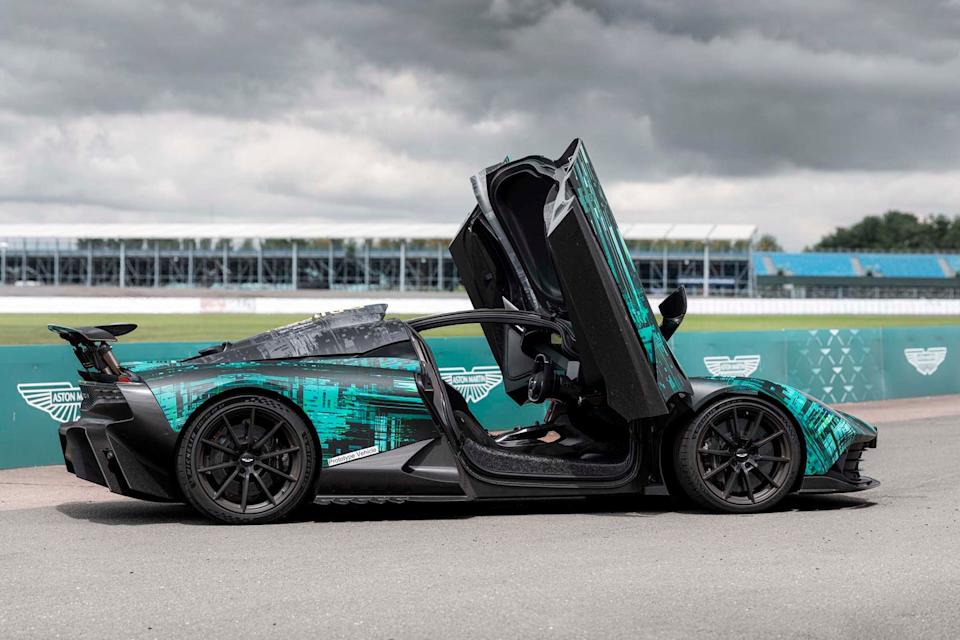
But the Stowe Circuit is nowhere near large enough to explore that kind of downforce-generating speed. The track is small, flowing, and like the nearby countryside, dead flat. The Valhalla feels quick and not blindingly fast, but we're seeing flashes of speeds not normally seen on tracks this small. Credit the visibility; the next corner is always in the windshield and never hidden by the A-pillars. You sit low and raked, but not unnaturally so. The whole package might seem daunting, but by golly, we're getting far too comfortable, far too quickly, despite wielding 1000-plus horsepower on a damp track we don't know. While this is a good thing for the car, it's probably good that we're getting waved into the pits before overconfidence steps in.
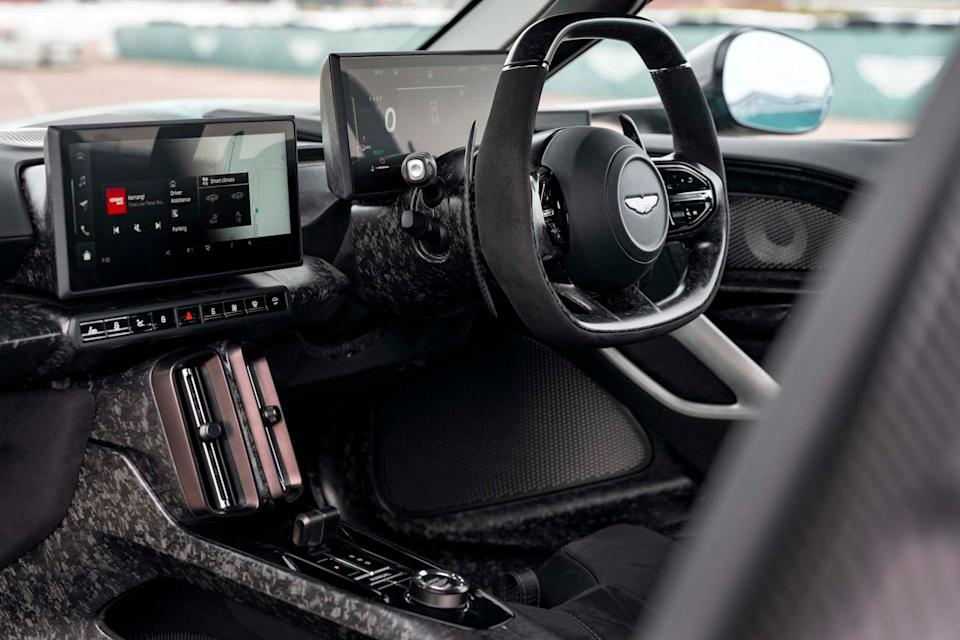
Let's learn some more. The airbrake and other active aero functions only apply in Race mode, where you also get access to a multi-stage traction control should you deactivate stability control. At startup, the car defaults to Sport mode with a tucked wing. This is the mode in which most sane people would drive. The dampers are as relaxed as they get, and the exhaust is at its quietest. Only in Race mode does the rear wing extend the full 10.0 inches. We didn't get a chance to experience the Valhalla's EV setting, but while in this mode, the car offers about nine miles of range when the 6-kWh battery is fully charged. A token feature, largely.
A keen eye will notice an odd exhaust layout. There are two pairs of pipes, one out the back and one out the top, like a Porsche 918. While the top pipes are the likeliest candidates to be the loud ones, we were surprised to learn that the upper portion is the primary, quieter exit. Only when activated do the lower pipes open up. When traveling at normal speeds, using the top pipes aids cooling, as that helps extract more hot air from the engine bay. Even so, the car isn't very loud, thanks to strict European regulations. While Aston wouldn't confirm it, we wouldn't be surprised if U.S. models get a louder exhaust when the Valhalla goes on sale by the end of the year. Those interested in saving weight can spec a titanium muffler. Full of fluids, the car weighs about 3900 pounds.
The Valhalla is full of neat details. While the interior's forged carbon fiber is largely cosmetic, prospective owners will take pride in knowing almost nothing is shared with anything else in the Aston lineup, only some switchgear and knobs. Flaps on either side of the engine snorkel open to reveal charging (left side) and fueling (right side) ports.
Getting back in the Valhalla for a second track session confirms what we were feeling on the first go. The steering is light and largely feedback-free (285-width front tires will do that), but it's micrometer-precise. The brake pedal, despite its by-wire construction, feels natural. With the front axle's e-motors there to bail you out, the confidence to drift out of a corner builds lap after lap. This Aston Martin has all the makings of a great street car. It's forgiving. Friendly. Approachable, even.

Aston Martin says it will build 999 examples of the $1-million-ish Valhalla. With options (some of which include pricey exposed carbon-fiber body panels), the unit run of these cars should clear a billion dollars for Gaydon's coffers. If you're the 1000th prospective buyer, don't fret; we imagine Aston will eventually produce a topless version too. While $1 billion is nice, $2 billion should keep things going a bit longer.
You Might Also Like


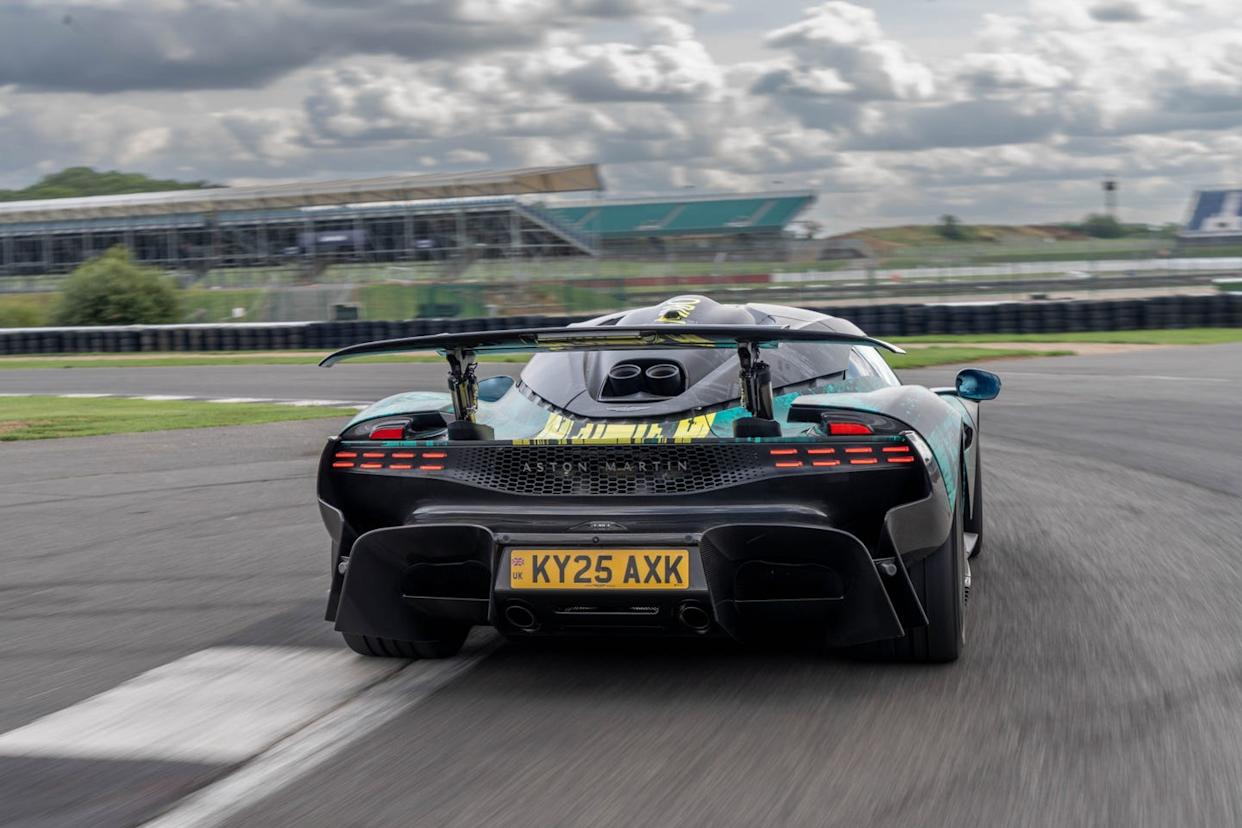
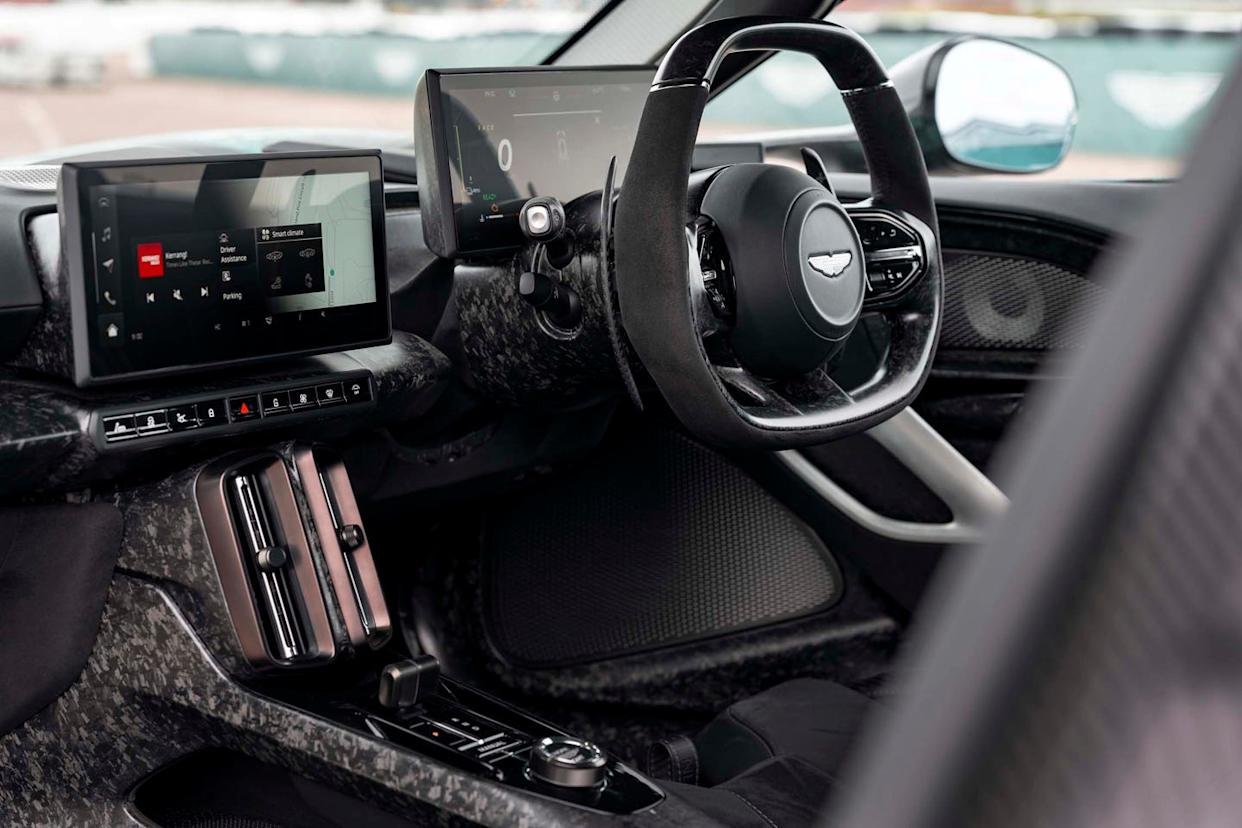
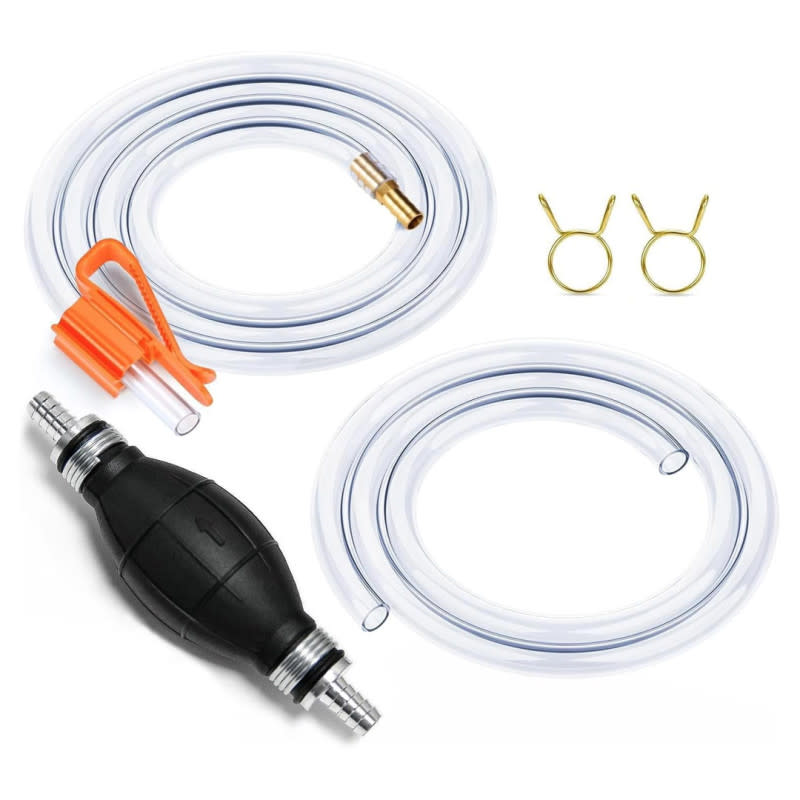


Comments